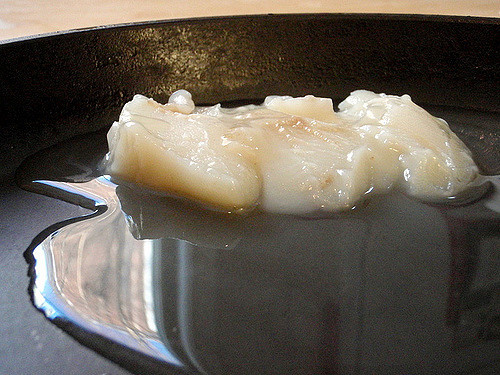Fat is not the enemy
posted on
December 7, 2018

Tallow. Bacon grease. Lard. Butter. Goose liver. These are bad, right?
After a lifetime of anti-fat propaganda based on soft science, it’s understandable that you may still be fearful of butter and steak. However, there’s an overwhelming amount of research (and common sense) telling us otherwise.
We need animal fat. Humans have evolved for thousands of years to eat animals.
There are many reasons why animal fat is healthy. I’m not going to get into super specific scientific reasons. Rather, I’m going to focus on what I believe to be the two most important reasons you should eat animal fat.
1. Animal fats are stable.
Animal fats are not prone to spoil or turn rancid. On a molecular level, they no not oxidize or break down, releasing free radicals into your system.
Vegetable oils and spreads oxidize over time and when exposed to heat, light, and oxygen. Once oxidized, they cannot serve a constructive role in your body’s health.
2. Animal fats (from animals fed a natural diet) provide vitamins found in no other foods.
Animal fats naturally contain vitamins A, D3, and K2, which are all incredibly important for healthy functioning of your body.
Vitamin A supports vision and the immune system.
Vitamin D3 maintains good bone health and immune system.Vitamin K2 prevents the buildup of calcium in the arteries, which makes them hard.
Vitamin K2 puts calcium where it belongs - into the bones - to keep them hard.
These are all fat-soluble vitamins. This means your body needs fat for the vitamins to be stored and used.
Animals are our natural multi-vitamin.
Whether this is shocking news or a confirmation of your beliefs, in modern times, it’s difficult to know what’s the “truth”. You’re surrounded by misinformation on all sides. However, when it comes to animal fat, it’s time to unlearn the propaganda and be acquainted with the happy, healthy truth.
For me, this started with a bottom up approach. I have listened to transformative stories of healing from people who changed their diet and saw outstanding results. I challenge you to talk to friends and family members. What dietary choices are they making, why, and what changes have they noticed over time?
If you do not incorporate many animals fats into your diet, I have an additional challenge for you. I challenge you to replace your vegetable oils and spreads with animal fat. Keep cooking your normal meals, but just use different fats. Take on this challenge for 4 weeks, and see how you feel. If you notice a difference, let me know!




